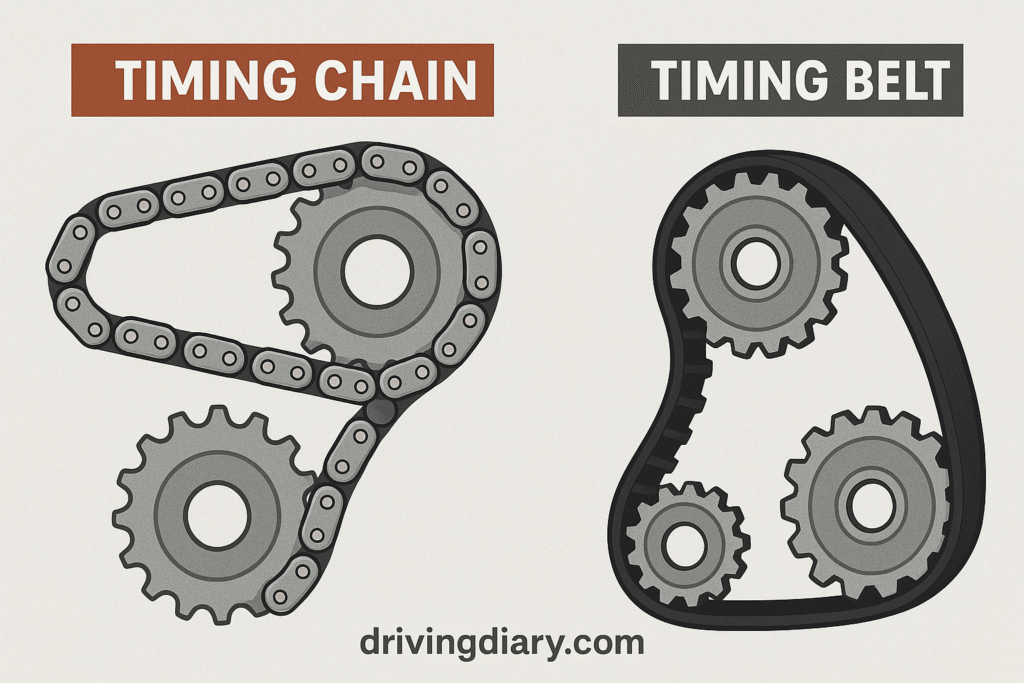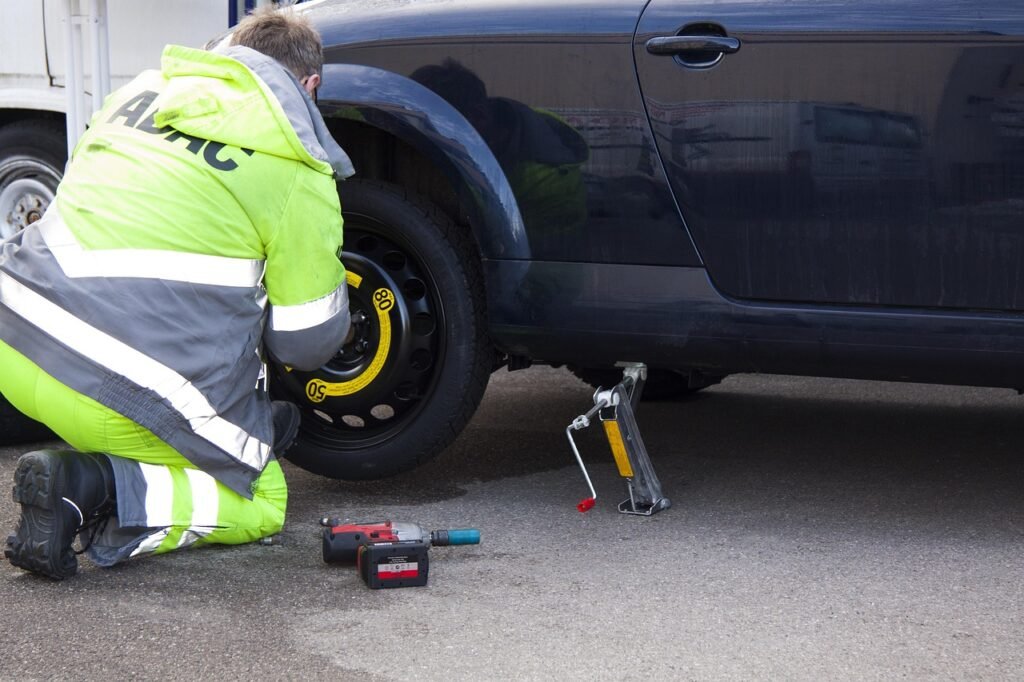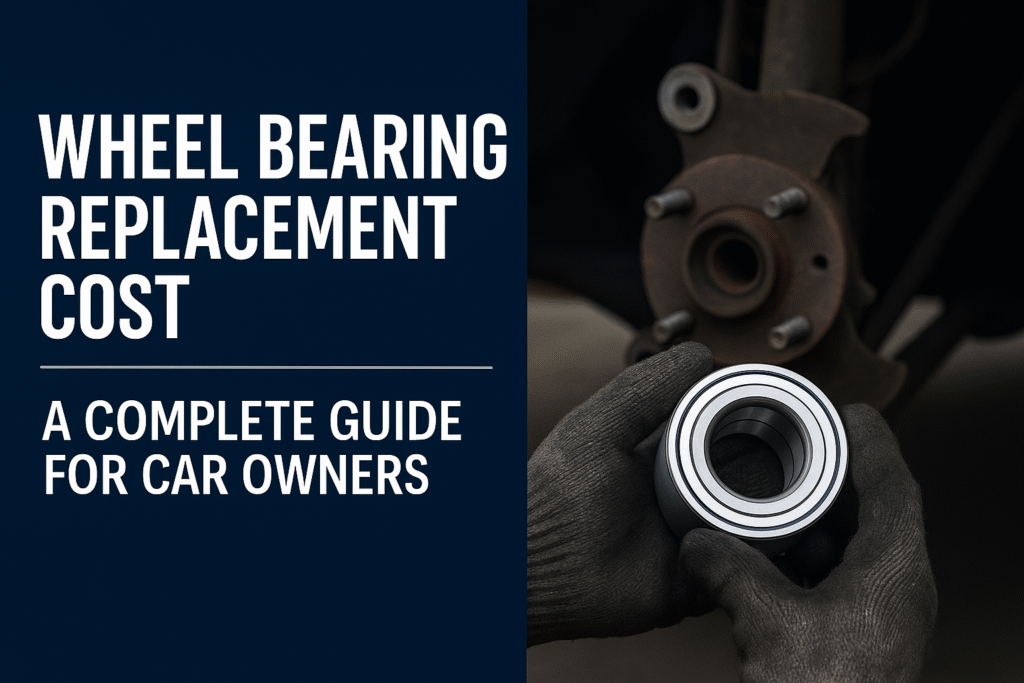When it comes to maintaining your vehicle’s engine, few components are as crucial as the timing chain. This often-overlooked part ensures your engine operates smoothly, precisely controlling the timing of the engine’s intake and exhaust valves. However, when the it starts to fail, it can lead to a host of engine problems, from poor performance to serious engine damage.
In this comprehensive guide, we’ll dive deep into it, how it works, the symptoms of a failing timing chain, and what you can do to maintain it. Whether you’re a car enthusiast, a mechanic, or a car owner, this article will help you understand this critical engine component and keep your vehicle running smoothly.
What Is a Timing Chain and Why Is It Important?
The timing chain is a key component in your vehicle’s engine, connecting the crankshaft and camshaft. It ensures that the intake and exhaust valves open and close at the correct time during each cycle of the engine, facilitating efficient combustion. Its proper funtioning is essential for optimal engine performance, fuel efficiency, and overall engine longevity.
How a Timing Chain Works in an Engine
The timing chain connects the crankshaft to the camshaft(s). As the crankshaft rotates, it drives the timing chain, which in turn rotates the camshaft(s) to control the opening and closing of the engine’s valves. The timing of these valve actions is critical to ensure that the engine operates efficiently and produces power smoothly. It is designed to last the life of the engine, but over time it can wear out, especially if not properly maintained.
Timing Chain vs. Timing Belt: What’s the Difference?
Although they serve similar purposes in an engine, timing chains and timing belts are quite different in terms of material, lifespan, and maintenance. Here’s a quick comparison:
Material and Durability Differences
- Timing Chains: Made of metal, usually steel, they are designed for durability and can last the life of the engine (150,000 to 200,000 miles).
- Timing Belts: Made from rubber, timing belts are less durable than timing chains and require periodic replacement, typically every 60,000 to 100,000 miles.

Maintenance and Lifespan Comparison
- Timing Chains: Last much longer than timing belts and are often referred to as “maintenance-free” as long as they are properly lubricated with clean oil.
- Timing Belts: Require regular replacement at specific mileage intervals to avoid catastrophic failure.
The main takeaway here is that while timing belts may need regular attention, theses are designed for longevity and typically last the lifetime of the engine, requiring less frequent intervention.
Common Issues and Symptoms
A failing timing chain can result in serious engine problems. Here are the most common symptoms that indicates it may be failing:
1. Engine Misfires or Rough Running
When the it becomes loose or stretched, it can cause the engine’s timing to go out of sync, leading to engine misfires, rough idling, and poor acceleration. You may also notice that the engine is sluggish when you press the gas pedal.
- Diagnostic Tip: If you experience engine hesitation, rough idling, or a noticeable drop in engine power, it could be a sign of a timing chain issue.
2. Unusual Engine Noises
A stretched or loose timing chain often causes rattling or slapping sounds within the engine. These noises are more pronounced during acceleration or at idle when it is under tension.
- Diagnostic Tip: Pay close attention to any rattling sounds coming from the engine, especially after the engine has been running for a while. This could indicate a worn-out.
3. Poor Acceleration and Loss of Power
If it is worn or damaged, it can impact the timing of the engine’s valves, resulting in poor acceleration, hesitation, or sluggish performance. You may notice that your car struggles to accelerate properly, especially when trying to speed up quickly.
- Diagnostic Tip: Check for hesitation or sluggishness when you try to accelerate. If the timing chain is at fault, the car will not respond as it normally would when you press the gas pedal.
4. Check Engine Light (CEL) and Error Codes
A faulty timing chain can trigger the Check Engine Light (CEL), often accompanied by error codes like P0011 or P0012, which indicate problems with the camshaft timing. These codes point to issues in the timing of the camshaft, which is often linked to it.
- Diagnostic Tip: Use an OBD-II scanner to check for error codes related to camshaft timing. If you see codes like P0011, it’s time to investigate the timing chain.
Timing Chain Maintenance
Regular maintenance is essential to prolong its life and avoid costly repairs. Here are some tips to keep your timing chain in top condition:
1. Regular Oil Changes and Proper Lubrication
It heavily relies on engine oil for lubrication. Dirty or low oil can cause increased friction and wear on the timing chain, leading to premature failure. Ensure you follow the manufacturer’s recommended oil change intervals to maintain proper lubrication.
- Recommendation: Change your engine oil every 3,000 to 7,500 miles, depending on your vehicle’s specifications and the type of oil used.
2. Timely Tensioner and Guide Replacement
Timing chain tensioners and guides help maintain proper tension and alignment. Over time, these components can wear out, leading to slack in it and premature failure. Regular inspection and timely replacement of the tensioner and guides can prevent the issues.
- Recommendation: Have the tensioner and guides checked during routine maintenance and replace them if necessary.
How to Tell When to Replace a Timing Chain
Timing chains are designed to last a long time, but eventually, they may need to be replaced due to wear. Here’s how to tell when it’s time to replace it:
Signs That Indicate Timing Chain Replacement Is Necessary
- Unusual noises such as rattling or slapping sounds
- Engine misfires or rough running
- Loss of power and poor acceleration
- Check Engine Light accompanied by relevant error codes
If you notice any of these symptoms, it’s crucial to have it inspected by a professional mechanic. The sooner the issue is addressed, the less likely it is to cause significant engine damage.
Average Timing Chain Lifespan
In most modern engines, a timing chain can last anywhere between 150,000 to 200,000 miles, depending on the vehicle and maintenance habits. However, it’s important to note that some vehicles may experience issues before this point due to driving conditions, maintenance habits, and other factors.
Cost Considerations
Replacing a timing chain can be an expensive repair, primarily due to the labor-intensive nature of the job. Here’s what you can expect:
Average Replacement Costs
The cost of replacing a timing chain typically ranges from $1,000 to $2,500, depending on the make and model of your vehicle. Luxury and performance vehicles may cost more due to the complexity of the repair.
DIY vs. Professional Replacement
While DIY replacement is possible, it requires advanced mechanical knowledge and specialized tools. Timing chain replacement is often a complex job best left to professionals to avoid further engine damage.
Vehicle-Specific Insights
Some vehicles are more prone to timing chain issues than others. Here’s a look at some of the most common cars that experience timing chain problems:
Common Cars With Timing Chain Issues
- BMW: Certain BMW models have had issues with timing chain stretch, particularly in the N54 and N63 engine families.
- Nissan: Some Nissan vehicles, especially those with the VQ engine, are known to experience timing chain issues.
- Toyota: Though generally reliable, some older Toyota models like the Camry may develop timing chain wear issues over time.
Manufacturer Recommendations for Maintenance
Some manufacturers recommend more frequent inspections of the timing chain and related components (such as the tensioner and guides) after 100,000 miles.
Conclusion
The timing chain plays a critical role in ensuring your engine runs efficiently. Understanding its function, symptoms of failure, and proper maintenance can help you prevent costly repairs and keep your vehicle running smoothly for years to come. If you notice any symptoms of timing chain failure, don’t delay—early intervention can save you from much more expensive repairs down the road.
FAQs
How long do timing chains last in modern engines?
Modern engines with well-maintained timing chains can last up to 200,000 miles or more. However, neglecting oil changes or driving in harsh conditions can shorten their lifespan.



